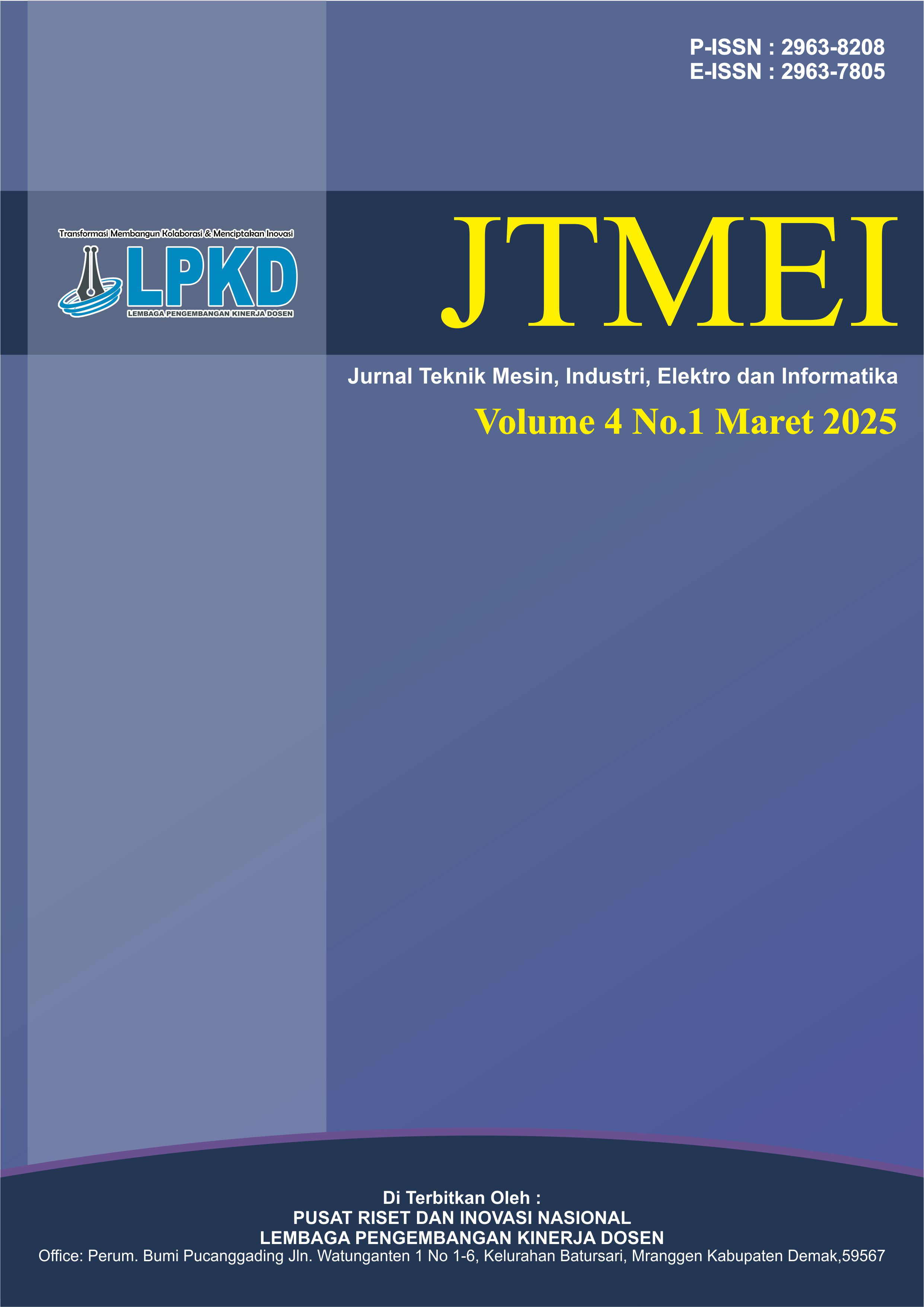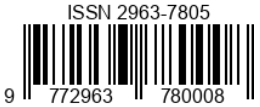Analisis Tekanan Seal pada Rudder Stock Menggunakan Computational Fluid Dynamics (CFD)
DOI:
https://doi.org/10.55606/jtmei.v4i1.4710Keywords:
Ship, Specification, Numerical, MethodAbstract
A ship is a type of floating structure that is specifically designed to move on the surface of sea water. This structure provides the ability for the ship to carry out various functions, from transporting goods, carrying passengers, to carrying out various other maritime operations. The advantage of a ship lies in its ability to move stably and efficiently in the midst of various dynamic marine environmental conditions. The direction of the ship's movement is controlled by the steering system, which is a crucial component in maintaining the smoothness and accuracy of the ship's journey. This steering system consists of various elements, one of which is the Rudder Stock. Rudder Stock has a vital role in the steering system because it functions as a link between the steering and the ship's propulsion system. Inside the Rudder Stock, there is another important component, namely the Seal. The Seal has the main function of withstanding pressure during ship operations, so that it can prevent leaks that can damage the steering system and other mechanical components. To evaluate the performance of the Seal in withstanding pressure, a pressure analysis was carried out using a numerical method based on Computational Fluid Dynamics (CFD) software, namely ANSYS. The results of the study showed that the total working pressure on the Rudder Stock Seal reached 0.766 bar, which is the sum of the maximum hydrostatic pressure of 0.432 bar and the maximum fluid flow pressure of 0.334 bar.
Downloads
References
Adji, S. W. (2005). Engine-propeller matching (pp. 1–31).
Coutsar, A. N., & Setyawan, D. (2019). Analisis Tegangan Sekat Memanjang Tanker Akibat Beban Sloshing menggunakan Metode Elemen Hingga. In Jurnal Teknik ITS (Vol. 8, Issue 1). https://doi.org/10.12962/j23373539.v8i1.42052
Dong, C., Wang, P., Xiang, J., Yang, Z., Yuan, C., Bai, X., & Tian, Y. (2023). Influences of abrasive particles on tribological behaviours of rotary vane steering gear seals under oil. Wear, 523, 204815. https://doi.org/10.1016/J.WEAR.2023.204815
Liu, R., Liu, L., & Wang, F. (2022). The role of hydrostatic pressure on the metal corrosion in simulated deep-sea environments — a review. Journal of Materials Science & Technology, 112, 230–238. https://doi.org/10.1016/J.JMST.2021.10.014
Molland, A. F. (2011). Ship resistance and propulsion: Practical estimation of ship propulsive power. In Ship Resistance and Propulsion: Practical Estimation of Ship Propulsive Power (Vol. 9780521760). https://doi.org/10.1017/CBO9780511974113
Okuda, R., Yasukawa, H., Yamashita, T., & Matsuda, A. (2023). Maneuvering simulations at large drift angles of a ship with a flapped rudder. Applied Ocean Research, 135, 103567. https://doi.org/10.1016/J.APOR.2023.103567
Prasetyo, D., & W.Lb, N. A. (2019). ANALISIS KEBOCORAN MINYAK HIDRAULIK STEERING GEAR LPG/C GAS WALIO TERHADAP KESELAMATAN KAPAL SESUAI HAZOP. Jurnal 7 Samudra, 4(1). https://doi.org/10.54992/7SAMUDRA.V4I1.58
Scurtu, I. C., Cucu, M., & Sturzu, A. (2018). Mechanical simulation approach in underwater high pressure acting on ships hull. Journal of Physics: Conference Series, 1122(1). https://doi.org/10.1088/1742-6596/1122/1/012033
Stern, F., Wilson, R. V, Coleman, H. W., Paterson, E. G., N---, G., N---, G., & N---, G. (n.d.). Verification And Validation Of CFD Simulations (Issue 407).
Yu-qin, W., & Ze-wen, D. (2020). Influence of blade number on flow-induced noise of centrifugal pump based on CFD/CA. Vacuum, 172, 109058. https://doi.org/10.1016/J.VACUUM.2019.109058
Downloads
Published
How to Cite
Issue
Section
License
Copyright (c) 2025 Jurnal Teknik Mesin, Industri, Elektro dan Informatika

This work is licensed under a Creative Commons Attribution-ShareAlike 4.0 International License.








